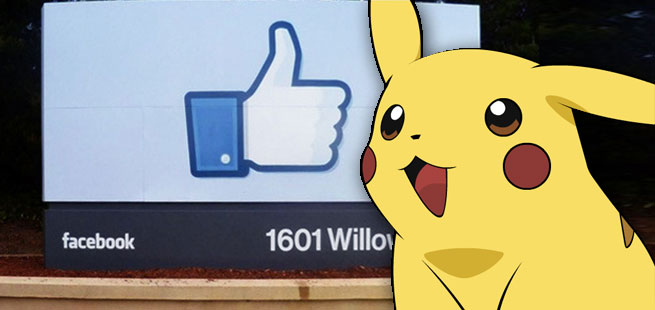
Facebook did a fair amount of internal testing before it unleashed Timeline on the world, and its engineers also tested out how apps would be able to access and publish to Timeline.
But instead of dogfooding Open Graph features with songs listened to, books read, or TV shows watched, they took a much nerdier route. Internal Facebook Open Graph apps include code commit trackers, design-sharing tools, and even a Pokémon catcher.
“The people who work here love building things, and that combined with our long-held culture of ‘dogfooding’ made the advent of the Open Graph a perfect opportunity for engineers to learn the platform and have some fun at the same time,” said a Facebook rep in an email to VentureBeat today. “Many of these apps were created at hackathons, which is a time when engineers often build some of their more playful projects.”
Throughout the testing/hacking/dogfooding process, Facebooker Paul Tarjan wrote on the company blog today, “We learned that it’s really important to think hard about how you want to model your objects and actions at the beginning.”
Just like the timeline apps you and I use, these apps rely on structured data to fill out the user’s Timeline with brief, scannable, interesting summaries of app activity.
The difference is the content. Our apps might tell the world, “Jolie biked 25 miles this week,” or “Chrissy read six books this month.” Internally, a Facebook engineer’s timeline might say, “Alex checked in 2,415 lines of code,” or it might show a thumbnail gallery of interface mockups a designer created that week. And the content comes from apps only used internally at Facebook, from the company’s Phabricator code review software to its Stay Fit workout tracker.
As for the Pokémon catcher, that’s just hackers hacking. Facebook has its own Asana-like task managment software, and every time someone completes a task, they “catch” a Pokémon. Timelines for Facebookers now also aggregate stories about the Pokémon you’ve caught.
Aside from being good, clean fun, building these kinds of Open Graph apps let Facebook’s engineers experience and work out a lot of Timeline bugs before the doors were opened to third-party developers.
“Facebook depends on employee ‘dogfooding’ as a major source of feedback, so as the engineers built on Open Graph and encountered bugs, they were able to directly fix existing issues and gain perspective that helped them improve Open Graph as a whole and relate to developers building on it,” the spokesperson told us.
Also, Tarjan noted in the post, these nerdy apps are being shown off to inspire devs to create Open Graph apps for whatever is important in their own lives, whether that’s tasks completed, books read, or something entirely new that Facebook Timeline hasn’t seen yet.
Here’s what some of the internal Facebook timeline apps look like:
[vb_gallery id=485411]


